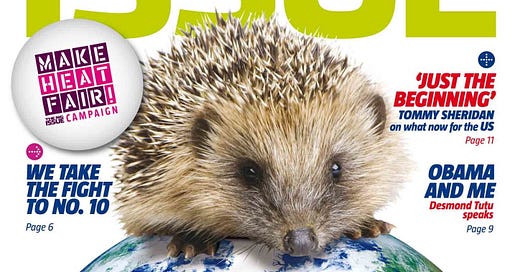First - PLEASE - if you are not familiar with scientific papers, and maybe think that they are not for you, please try and give this one a go - it has far more really interesting information in it than I can put in this summary!!!
The paper I want to share with you is published in Biological Conservation - and is ‘open access.’ This is important. The scientific publication industry can be a racket. It is called ‘Conservation concern for Europe’s hedgehog species (Erinaceidae): Current statues, issues and needs.’
I know the three authors - Abigail Gazzard, David Macdonald and Sophie Lund Rasmussen - and they have done a fantastic job of summarising the data and identifying areas of work that need to be undertaken.
For the benefit of you who have not had a background in reading these sorts of papers, they come with easily digestible summaries - first there are the ‘Highlights’:
Europe's hedgehog species are poorly monitored, though some are known to be in decline
Despite the general public's interest in hedgehogs, decline is driven by anthropogenic factors
Intensified conservation and research efforts are required to mitigate the situation
And then, a slightly more detailed summary in the form of the ‘Abstract’:
Recent regional updates to the IUCN Red List reveal a discouraging tendency: the hedgehog species of Europe are either declining and/or neglected by research and monitoring programmes to such a degree that evaluation of their conservation status remains challenging. Hedgehogs are charismatic nature ambassadors, and they are appreciated widely by the public with numerous individuals and organisations willing to contribute to their conservation, yet there exists a disconnect between general interest in hedgehogs and broad-scale monitoring efforts. Here, we clarify the current conservation statuses of the five species of hedgehogs in Europe, knowledge of threats, what is being done to mitigate declines, and where the conservation and research gaps lie. There are several common risks posed to hedgehog species in Europe including roads, and habitat loss and degradation. For some species, regional-scale action is urgently needed to prevent populations from shrinking any further. For all, there remains a comprehensive lack of knowledge of populations, ecology and threats.
The paper proper begins with the ‘Introduction’ - which sets out the reasons for the work being done, and presents the background material. In this case starting with the total number of hedgehog species around the world, currently put at nineteen - and then honing in on the five found Europe. These are ‘our’ (speaking for me, writing in England) Western European Hedgehog, Northern White-breasted Hedgehogs, Southern White-breasted Hedgehog, Long-eared Hedgehog and the North African Hedgehog.
Next part are the ‘Methods’ which are self-explanatory - the idea is that anyone reading the paper then has all the information they need to be able to repeat the work, to see whether the correct conclusions have been reached. In this instance the methods refer to the sources of information used for the review. There is then a discussion about Conservation Status, before an important look at the threats each species face.
The detailed look at research and conservation efforts amused me as it is where they refer to me … but not one of my books, or even scientific papers I have written … no … just an article I wrote in the Daily Mail!!!
The paper concludes with ‘…with the recent Red List status changes in mind, we encourage increased research and conservation efforts for documenting and preventing further decline of these important and charismatic species.’
I hope that this update has given you an insight into the work that goes on behind the scenes and why we need to continue funding research - this is the sort of thing that might make its way into the popular press … even the Daily Mail!!





